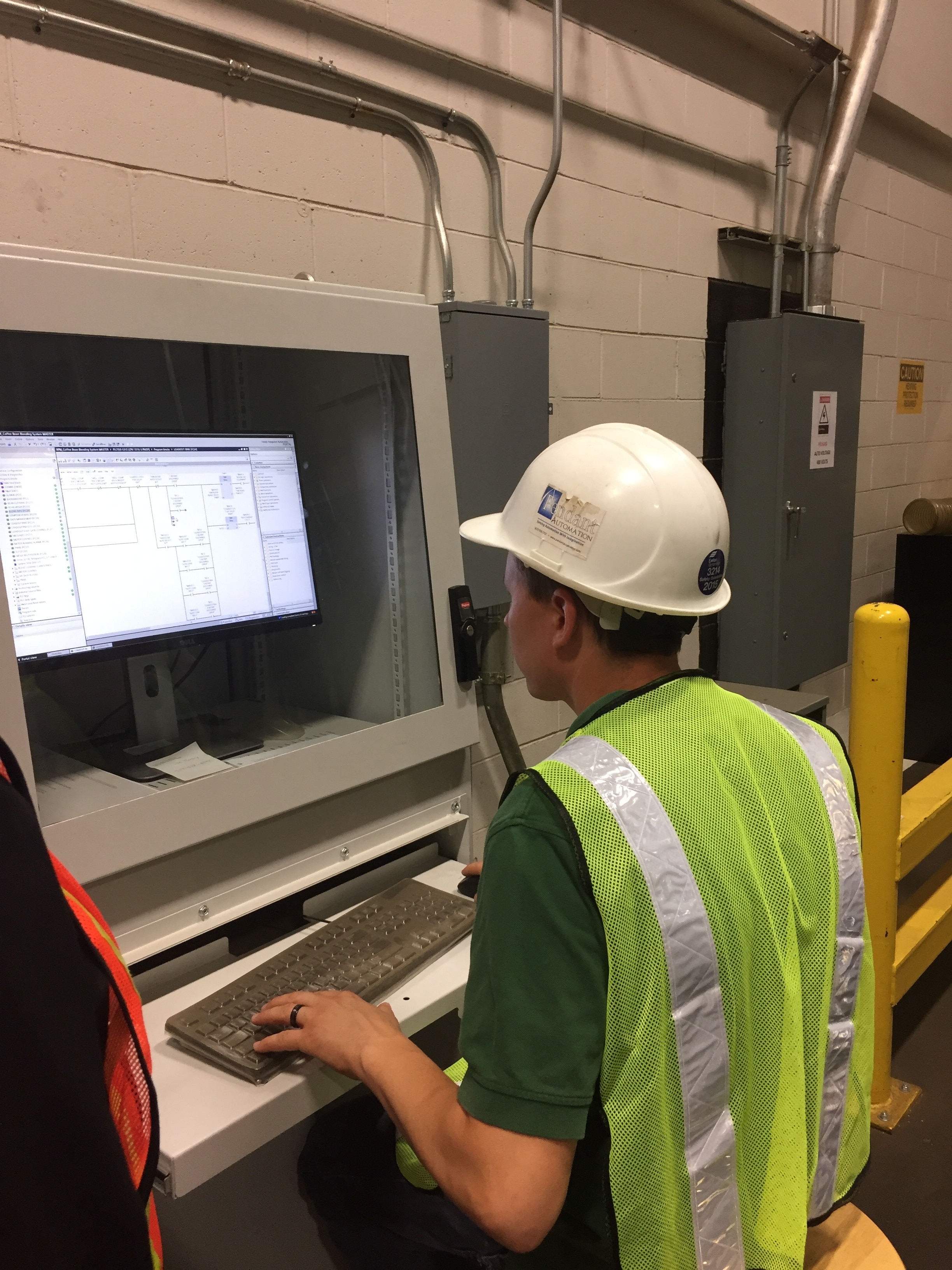
Startup and Commissioning – What to Expect
Startup and Commissioning – It’s a Process
Let’s be honest at the start – we have a vested interest in creating this blog post. The startup and commissioning process is when you begin to see your investment in action. Clients are always eager to start up a new project. But the workings of the control system are often a mystery. To the casual observer, a controls engineer gets a bunch of unruly electrons to behave. Voila, the conveyor handling equipment springs to life and does what it is supposed to do. Of course you know it’s more complicated than that. This post describes the process in a little more detail so you know what to expect the next time you invest in automation.
The Steps
- The startup tech shows up on site with full sets of coordination, control, and one-line drawings. Pendant strives to write the PLC program as close to 100% completion as possible before we arrive. How you can help: make sure that the electrical installation is complete prior to our arrival. It is not unusual for us to arrive only to find out that the project isn’t ready for us. This unnecessarily costs you money.
- The startup tech commissions the control panel or panels. The tech checks the voltage of the feed to the panel to make sure it is within specification. The tech also checks terminations and labeling of the wires and confirms that there are no loose wires.
- The tech checks out the I/O. Here the tech makes sure that the wiring of all field input and output devices is according to the design. This includes switches, beacons, lights, pushbuttons, photo eyes, E-stop zones, and field interlocks. The tech confirms that field devices have the proper labels. The tech also checks out that communications networks are set up correctly. This step eliminates the possibility that a problem encountered later is a field wiring mistake.
- The tech confirms that the motors are wired correctly and rotating in the right direction. It’s easy to wire a motor incorrectly. During this step, the tech may also assist with conveyor belt tracking adjustments.
- The tech now proceeds to the most critical step – checking and adjusting the program code. By now, the tech is running the system to see that the code is working properly. He tests jam resets, merges, sorts, lane full conditions, interlocks, alarms, and the correct functioning of the HMI. The tech spends most of his time during startup and commissioning on this step. How you can help – during this phase, expect to see some issues with the way the system operates. It’s during this phase and the subsequent testing with the operators that the tech makes adjustments to the program and possibly the placement of field devices.
- The tech begins transitioning the operations to your staff. This step includes training your supervisors, your operators, and your maintenance staff in the use and troubleshooting of the system. The operators take over the controls and begin to run your product. The tech observes closely to see how efficiently the system functions with the operators in control. He looks for jams that show up in different areas than expected. He may make changes based on how the operators work with the system. How you can help – be sure that your staff takes the training seriously. They should understand clearly how the system functions, and how to troubleshoot problems. People often ask us how to do something as simple as starting the system long after we complete startup and commissioning.
- The startup tech walks through the entire process with your project manager or operations supervisor. This is the final step before you sign off and accept the system. How you can help – if you plan to “demo” the system to your senior management, your board, your investors, or your clients, wait until after this step is complete to make sure it operates according to plan.
The steps above sound easy on paper. But this process usually takes days and could stretch into weeks depending on the complexity of the project. Expect some problems, but you can also expect us to resolve them. In the end, if everyone does their part, your project will proceed smoothly and you will start to reap the returns on your investment very quickly.